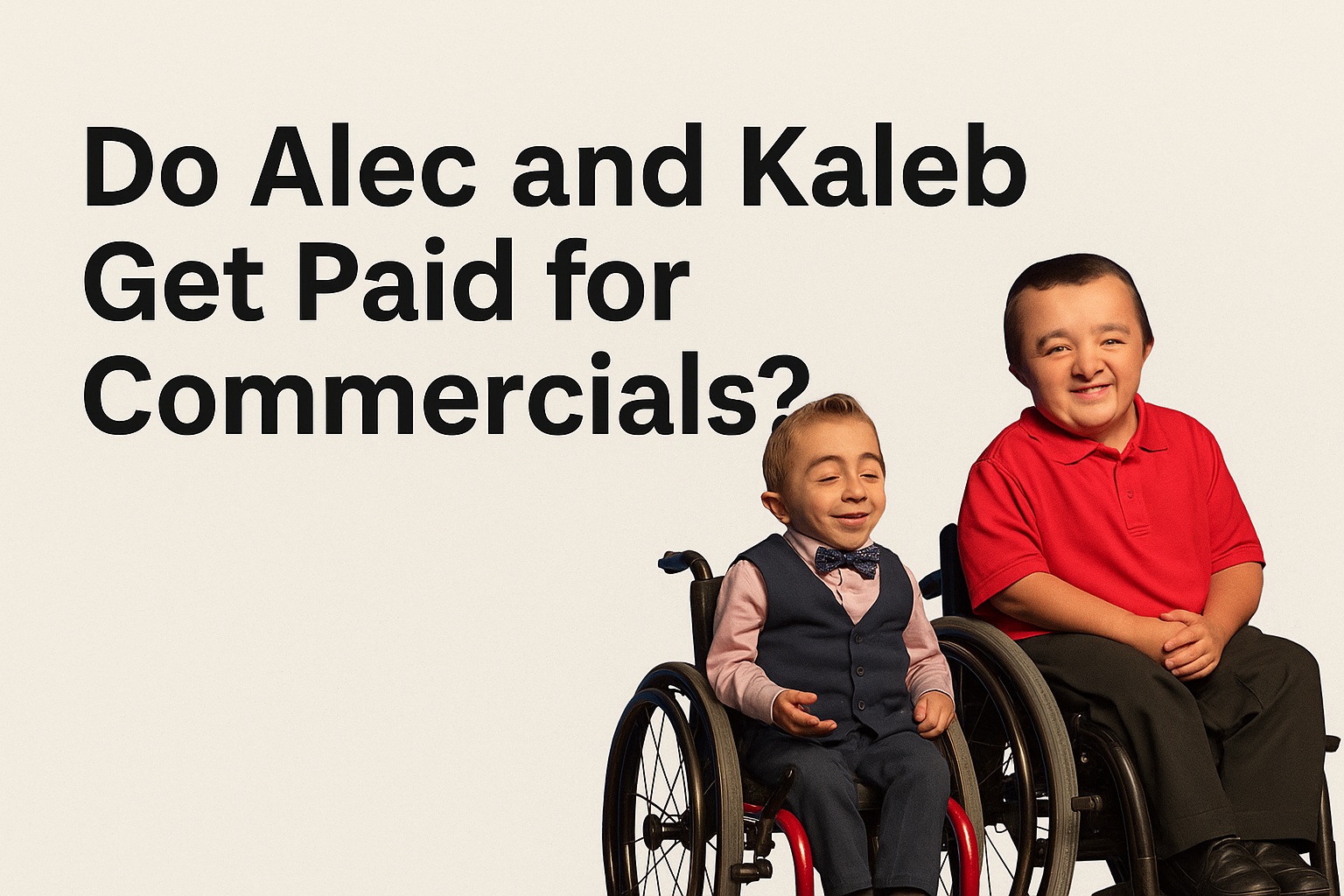If you’ve ever caught those heartfelt commercials for Shriners Hospitals for Children (also known as “Shriners Children’s”) featuring smiling faces in wheelchairs or with walking frames, you may recognise two names: Alec Cabacungan and Kaleb‑Wolf De Melo Torres. These young men have become the faces of the hospital’s fundraising campaigns—but it naturally raises the question: Do they get paid for these commercials? Short answer: yes, they appear to receive compensation, although the full details are not publicly disclosed and the structure is a little more nuanced than a standard actor’s paycheck.
1. Who Are Alec and Kaleb?
Alec Cabacungan has lived with osteogenesis imperfecta (OI), a condition that causes extremely brittle bones, and has been a patient of the Shriners system since infancy. He became the hospital’s national patient spokesperson and starred in national commercials starting in his teens.
Kaleb-Wolf De Melo Torres, often featured in the same campaigns, was born with OI as well and has broken more than 200 bones and undergone 11 surgeries according to the hospital’s profile. Both of them are real patients—so their role is not simply acting but tied into the hospital’s advocacy and fundraising mission.
2. The Commercials: Why They Matter
The Shriners commercials frequently show children or young people with serious orthopaedic or rare-condition diagnoses, receiving care at Shriner’s hospitals, and then going on to ride bikes, play sports or reclaim mobility. For example, Kaleb’s story appears on the hospital’s site:
“Hi. I’m Kaleb…and this is my story. I was born with osteogenesis imperfecta … I have broken my bones almost 200 times, and I have had 11 surgeries.” Source: shrinerschildrens.org
Alec has long been featured in similar spots, and his story has been featured in news outlets alongside his role in the commercials. Source: CBS News
These ads are more than marketing for a product—they’re fundraising and awareness tools for a nonprofit organisation. That changes some of the usual rules around commercial payments.
3. Do They Get Paid? Yes—But the Details Are Fuzzy
Plenty of sources assert that Alec and Kaleb do receive compensation for their commercial appearances. For instance:
This article says “the two marketing influencers are paid … The amount… unknown.”
Another says the arrangement likely includes “travel reimbursement, stipends, and honorariums” rather than traditional actor earnings.
Yet another estimates that each might have earned in the ballpark of $50,000–$250,000+ from commercials and related media work.
However—and this is important—Shriners has not publicly released exact contract amounts or payment structures for these individuals. So while payment appears likely and indeed likely significant, the rigorous details (flat fees, residuals, usage rights, etc.) remain private.
4. Why Payment Is Likely, and What It Might Consist Of
Here are reasons why it’s reasonable to believe Alec and Kaleb receive payment, and what kind of compensation might apply:
- Industry norms: In commercial and advertisement work—even for nonprofits—participants are often paid for time, travel, appearances and usage of their image. The article on child actors and commercials outlines that even children in ads get base fees and sometimes residuals.
- Time and commitment: The Shriners article on Alec says he travels about 80 days a year as part of his ambassador role. That suggests significant commitment beyond a one-off shoot.
- Image usage and publicity: His face appears in fundraising solicitations nationwide; Kaleb’s story is used to attract donations. That usage likely triggers compensation for image and time.
- Nonprofit context affecting structure: Because Shriner’s commercials serve a fundraising purpose rather than a pure product sell, the compensation may include non-cash items (travel, accommodations, trust funds) or allowances instead of just large actor fees. As one source says: “While the charitable nature of the organization… the norms of the advertising industry suggest they receive payment.”
- Estimates and net worth clues: Estimates place Alec’s net worth around $500K–$1.5M, Kaleb’s perhaps $1M–$2M per some reports. Though net worth includes many factors, commercial/appearance payments seem to play a role.
5. What We Don’t Know
- We do not have confirmed contractual figures showing how much each appearance pays, or whether they get ongoing residuals or royalties.
- We don’t know how much time is standard for a shoot, or what the usage term is (national TV vs digital vs web).
- We don’t know exactly how much of the income is from the commercials, and how much is from other ambassador or public-speaking roles.
- Because the participants are minors (or were minors at times) and because nonprofit campaigns sometimes treat ambassadors differently than commercial actors, the arrangement may be non-traditional—meaning comparison with standard SAG-AFTRA actor rate charts may not fully apply.
- Some articles suggest the compensation might be modest “stipends” rather than full commercial actor salaries—so public perception of “big celebrity money” may be overstated in some cases.
6. My Take: Balancing the Narrative
As someone writing this for readers who are curious—not just about money, but about fairness and transparency—I think this is the picture:
- Yes, Alec and Kaleb are compensated for participating in the commercials of Shriners Hospitals for Children.
- The compensation probably includes some mix of flat fees, travel and image-usage payments, and possibly speaking-engagement income.
- The amounts are likely meaningful (five-figure, maybe low six-figure total over time) but not necessarily ‘Hollywood blockbuster’ level.
- Because the commercials serve a charitable fundraising purpose, the arrangement might prioritise awareness and mission over pure profit.
- The compensation may be structured to benefit them long-term (for example via trust funds or future educational support) rather than purely cash-out now.
- For parents, fans or donors wondering “Are these young people being exploited?” the evidence suggests they are not being used for free—they are being recognised and compensated. That’s a positive from a fairness standpoint.
7. Final Thoughts
So if you’ve ever asked “Do Alec and Kaleb get paid for commercials?” the answer is Yes, they almost certainly do. The specifics are private, but everything we can find points toward real compensation—especially given their prominent roles and far-reaching campaign presence.
At the same time, what they’ve done goes beyond commercials. Both young men serve as ambassadors of hope for children with disabilities, raising awareness for osteogenesis imperfecta and the mission of Shriners Hospitals for Children. Their work carries both social and financial value.







